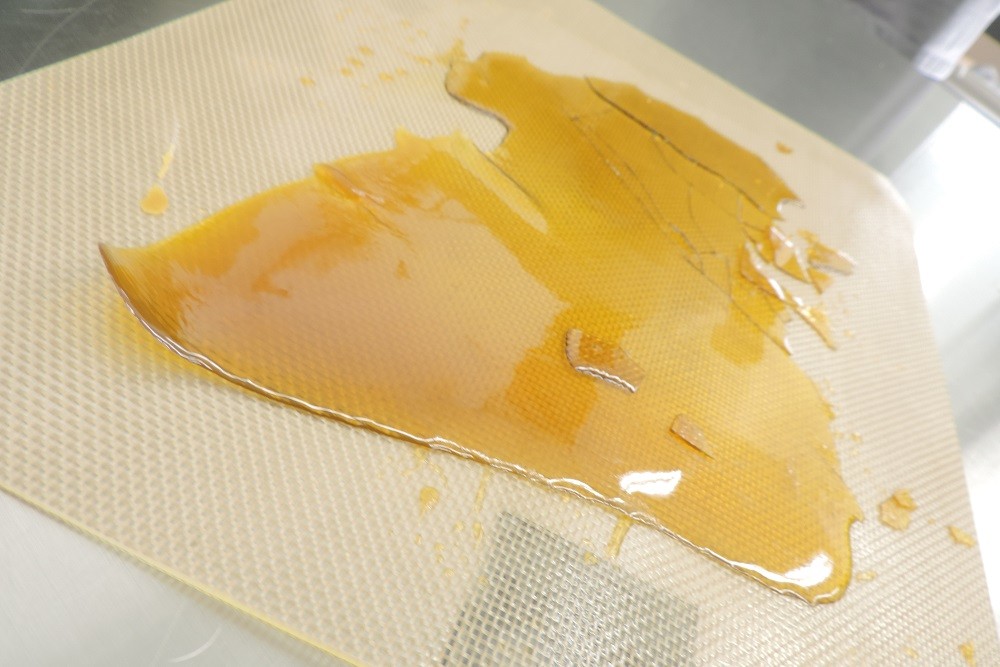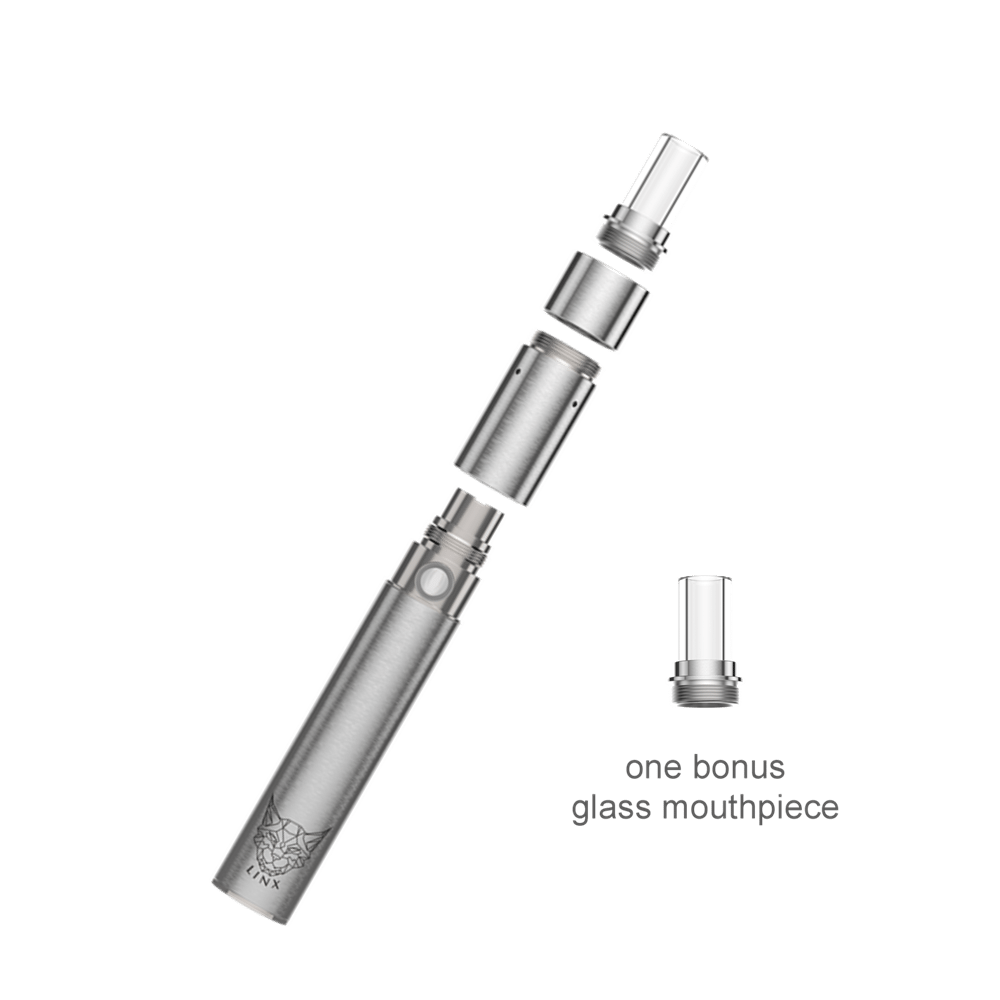How do you choose the best vaporizer?
Here are some general things you should keep in mind while searching for yours:
- Budget
- Vaping Material (dry herbs, waxy concentrates, oils)
- Design
- Taste and Vapor Density
- Vapor Delivery Methods
- Heating Method
- Easy Charging
- Warm Up Time
- Temperature Control
- Maintenance (especially clean-up)
- Ease of Use
Budget
How much are you willing to spend on your vaporizer? Determine which style and design best fits your range, whether looking for a desktop, portable, or pen style vaporizer.
The best approach for determining your choice might be to balance factors of your budget such as:
- Frequency of planned usage
- Desired vapor quality
- Single or shared usage
- Most desired material (dry herb, waxy concentrates, or oils)
If you are planning to vaporize daily make certain that the unit you use is truly capable of vaporizing without any combustion.
A non-combustion vaporizer gives you the greatest return from your material, along with the highest quality of effect, and is far healthier for your lungs than inhaling smoke.
Vaping Material
Before you start vaping, set your expectations about the kind of vaping material you want to use. Make sure that you know what to look for. For most occasions, you’ll be able to find the taste that suits you by exploring the different options that exist.
By mixing and matching dry herbs, oils, and waxes you will eventually develop your own preference.
Dry Herbs: Dry herb vaporizers are capable of vaporizing your favorite dry aromatherapy blends.
Use a grinder for the most efficient vaporization process. Keep your stored herbs dry before vaping it, as moist herbs results in uneven heat distribution as your materials get exposed to the heating element.
Also, cannabinoids efficiently vaporize in a dry environment because the lack of moisture helps the vaporizer reach the ideal temperature in a shorter period. The presence of moisture locks the healthful cannabinoids instead of releasing them as vapors.
For beginners, dry herb vaping is the usual way to go. The lower amount of THC dosage per gram of dry herbs means you can work your way to discovering your personal dosage.
Oils and Waxes: Oil and wax vaporizers are intended for any type of oil, wax, or other concentrate. Some of these vaporizers feature a cartridge system whereas others use an oil dish or bowl.
Oils contain concentrated amount of THC, thus a few drops are enough to experience effects, whether recreational or medical. The nature of waxes means you can get big effects from small quantities.
Dabbing
Dabbing is a slang term used to describe taking single dose hash hits of concentrates. Concentrates that can be dabbed are made using various methods some of which included butane, CO2, or isopropyl alcohol.
There are many different ways to concentrate your material and it is taking medicating to a whole new level.
The best part of taking a dab is it is a healthier alternative to smoking a bowl because you don’t inhale the butane from the lighter or smoke from the leafy material, just the vapor from the Trichomes.
The effects from taking a single dab depends on your tolerance. Regardless of your tolerance, the high from taking a dab kicks in instantly.
If you are dabbing a Sativa dominant extract you will have an incredible head high and be ready to take on the day, but if you are dabbing some strong Indicas you can expect to be sleeping soundly in a short time.
These concentrates are referred to as oils, waxes, budders, and shatters and each one has its own consistency and method of being made.
On average, concentrates contain anywhere from 70%-90% THC and typically have a higher CBD content ranging from 1%-4% which is great for pain relief.
Oils usually have the consistency of molasses and are most often amber in color. Oils are typically made using butane and the dispensary would prefer cleaner methods like CO2 or solvent-less. Focus is more on other concentrates like waxes, butters and shatters.
Waxes range in appearance from a cream colored crumbly candle wax to a transparent amber colored wax that looks like wet sugar. Appearance depends on the strain that the concentrate it is being derived from.
Budders are usually creamy in color and have a texture similar to butter. This concentrate is almost like a paste. It will not crumble when pressure is applied like waxes when you poke it with your dabber.
Shatters range from dark amber to very light yellow in color and are transparent. When cold, shatter will flake off into little shards when scraped with your dabber. When a little warmth is applied it becomes malleable like taffy.
Design
Design factors include:
- Quality
- Precision
- Durability
- Portability
- Efficiency
- Versatility
- Warranty
Quality
Consider the materials used in the making of your device and plan to spend more for quality. After unpacking your new vaporizer and setting it up, be sure you sterilize the unit to remove any residue or chemicals from the manufacturing process.
Since start-up vaporizer brands are outsourcing production to China, not all customers are satisfied with the vapor that they get to taste. Mass produced versions of vaporizers sold in the market have the tendency to be poorly constructed.
Inside and outside your vaporizer, various materials have been used. They include stainless steel or aluminum, possibly other metal alloys, hardened plastic, perhaps silicone, and often glass. Inside you will find the chamber is made from glass, ceramics, or stainless steel.
While ceramics and glass are best, the benefits of using these neutral materials are undermined if the pathway is intersected by lead-based soldering, plastic, or other materials that give off fumes when heated.
Precision
Most of the time, the life of the vaporizer depends on the heating element or heating chamber. Is the heating element hot enough to produce the densest vapors and purest flavors? Or, does it get too hot that dried herbs burn instead?
There are 4 types of heating elements: ceramic, metal (aluminum, stainless steel, titanium), and glass.
Ceramic– the ceramic heating element is the most widely used type because it gives the purest vapors that come directly from the materials alone and not any rogue or loose chemicals coming from the heating element itself.
Among all the heating elements, the ceramic heating element has the highest melting and boiling point, which means it, can withstand extreme heat, sometimes exceeding 3000°F, without degrading its overall structure.
This doesn’t mean you get good and pure vapors too. Poorly made vaporizers can have their internal wirings and joints connected by cheap solders or even plastic.
So, when it comes to choosing the right vape, sometimes the price speaks for itself because it could reflect how the manufacturer takes the time and money to produce only the best vaporizers.
Metal – the metal heating element is perhaps the next best thing to the ceramic type. For example, an aluminum heating block can reach a maximum temperature of 464 °F, although in theory, this could go higher because the element’s melting point is at 1220 °F.
Note: Manufacturers maintain vaping temperatures that do not reach or exceed the level in which plant materials start to burn. Metal is a good conductor of heat and therefore responds well to temperature changes.
You’ll appreciate its accuracy when used in vaporizers with temperature control settings because it can provide accurate gradation of heat. Perhaps this is the only aspect in which the aluminum does better than ceramic.
Glass – these are not your ordinary glass materials. Glass heating elements can withstand temperature as ceramic or aluminum does.
Usually, it’s the presence of silicate that makes this heating element surprisingly efficient and strong. However, there are not many vaporizers that use glass because ceramic materials are more durable and perform better overall.
Durability
A vaporizer is an investment that you want to last a while, so make sure it’s durable.
The best desktop and portable vaporizers are designed to last, so don’t put off getting one even if they cost a little more because the market is full of cheap vaporizers that break within an unexpectedly short period of time.
Today, even the most advanced and pricier compact vaporizer pens come in high-quality build and materials to make sure you get only the therapeutic compounds present in your dry botanicals or concentrates.
Portability
The whole basis of vapes is their convenience and discreetness. The size of the vaporizer is also crucial. For someone who is on the go, you may want to look at the measurement of the device to assess if it fits your pocket well or not.
Popular vape pen manufacturers are coming up with even larger devices to include more improved features. We call this category of vaporizer the Micro Portable Vaporizer.
Portable vaporizers generally remain unchanged in terms of size because of the larger heating chamber and more refined features such as precise temperature controls and LED displays.
Warranty
A warranty is insurance coverage that the manufacturer offers for your vaporizers. It is important to take warranty coverage into consideration when purchasing your vaporizer.
Most online sellers provide product warranty coverage for the units which they sell below the Manufacturer’s Minimum Advertised Price (MAP) value to their customers.
The warranty enables online sellers to gain competitive advantage by not dealing with returns or replacements, which saves time, money, resources, and hassle for sellers.
Extended warranty plans are also available at affordable rates.
Taste and Vapor Density
Each vaporizer gives a unique taste and texture; some will give out greater vapor output than others, so choose the best vaping device that suits your personal needs.
The factors affecting efficiency (vapor output) include:
- Temperature
- Specimen density
- Storage time of vapor
- Draw resistance of the unit itself
- Oven design
- Taste of vapor
- Inhalation method (breathing technique)
Temperature Control
Research using vaporizers found the delivery efficiency highest at around 439 °F, falling to about half efficiency at 302 to 356 °F (180 °C) depending on material.
Vaping Temperature for Dry Herbs
When vaping dry herbs, vaping temperatures ranging from 347 to 374 °F tends to result in more sedative or relaxing effects, also depending in part on the strain of dry herb you use.
Anything above 374 °F tend to give you an instant “high” especially for beginners. Temperatures that go beyond 446 °F will combust your herbs.
Vaping Temperature for Cannabinoids
Tetrahydrocannabinol (THC) – Vaping temperature ranges from 311 to 320 °F. THC is perhaps the most essential and sought-after cannabinoid among medical and especially recreational marijuana users.
Taken in adequate doses, THC can help alleviate symptoms of pain and other physical discomfort. Some studies have also shown that this cannabinoid protects brain cells and can even promote growth.
Different cannabis strains contain varying levels of THC and proportions of other cannabinoids.
For example, the Sativa strains have the highest amount of THC, while Indica strains contain more of the other health-giving cannabinoids than the more psychoactive THC.
Cannabidiol (CBD) – Vaping temperature ranges from 320 °F to 356 °F. This cannabinoid is as abundant as THC in any cannabis plant. CBD is non-psychoactive, meaning that it does not interfere with your judgment or your motor skills. But what’s more important are the therapeutic effects of CBD.
These include the cannabinoid’s anti-convulsant (suppresses epileptic seizures), anti-cancer (hampers the growth of tumor cells), anti-inflammatory and anti-oxidant properties (fights against neurodegenerative disorders such as Alzheimer’s disease). Studies also show that CBD alleviates anxiety and depression.
Cannabinol (CBN) – Vaping temperature 365 °F. Unlike THC, cannabidol has the opposite effect of inducing sleep, making this a good drug for those suffering from insomnia.
But beyond its sedative effects, CBN has also been found to combat methicillin-resistant Staphylococcus aureus (MRSA), powerful bacteria that’s been hard to eliminate because of its resistance to antibiotics.
Cannabinol does not occur naturally in fresh cannabis. Instead, it becomes the byproduct formed as THC degrades over time. So, the longer you store your dry herbs, the more amount of CBN it contains.
That means fresher herbs come with a stronger punch, while older ones tend to have more sedative effects.
So, for you to benefit more of the sleep-inducing effects of marijuana, keep your stock in a cool, dry place for several days or weeks.
Vaping Temperature for Other Herbs
- Eucalyptus, 266°F (130°C)
- Hops, 309°F (154°C)
- Chamomile, 374°F (190°C)
- Lavender, 266°F (130°C)
- Lemon balm, 288°F (142°C)
- Sage, 374°F (190°C)
- Thyme, 374°F (190°C)
Specimen Density
The purest preparations produced the highest efficiencies, about 56% for pure THC versus 29% for plant material (female flower tops) with 12% THCA content.
Besides THC, several other cannabinoids as well as a range of other plant components including terpenoids were detected in the plant material.
Storage Time of Vapor
The longer vapor is stored, the more THC is lost as it condenses on the surface of the vaporizer or the balloon. This loss may be negligible over a few minutes but may exceed 50% after 90 minutes.
Draw Resistance
A key factor in the efficiency of any unit can also be found in the design of the vapor path in the unit itself and how much draw resistance is necessary to get the level of vapor wanted.
Oven Design
Oven design is another critical element in the efficiency of any vaporizer, as well as its ability to vaporize the material loaded without combustion or burn.
You do not want combustion or burn with any vaporizer you choose as your key unit.
The oven design and construction and heating element used are crucial to the quality of taste, minimization of heat, and strength of vape obtained. See Precision for more information on oven heating elements.
Taste of Vapor
There are different factors that could affect the taste of your vapor. For instance, do you have to fill up the entire chamber when you vape? Or maybe, you only fill it half-way?
Do you have to preheat the vaporizer before placing the herbs? This could play a major role especially for a continuous vaping experience.
If the vaporizer contains a fan, it has the ability to provide you with high quality vapor. Fans are typically present in high-end vaporizers that deliver the vapor in different thickness. There are vaporizers that have different speeds for their fans.
For pen vaporizers, it is possible that you’ll notice a burnt taste on the vapor because portable vaporizers sometimes have a design where the herbs are placed near the heating element.
Inhalation Method
Once the vapor is inhaled into the lungs, the concentration of the vapor that is actually absorbed by the body depends on the breathing techniques that you use.
This depends on your chosen material and your desired effect. Using proper vaporizer breathing techniques enhance the efficiency of your material ingredients as well.
For a higher concentration of active ingredients to be absorbed, inhale the vapor from the vaporizer, hold the vapor in your lungs for a few seconds and then exhale.
The coarseness or fineness to which you grind your materials for use in a vaporizer has a large effect on the efficiency and absorption of vapor.
Since a vaporizer heats the material to create vapor, the more finely ground your aromatic blend is, the more active ingredients are released from it.
This in turn creates a denser vapor with less air. As you inhale and hold the vapor in your lungs, more of that vapor contains the vaporized material resulting in a greater concentration being absorbed by the body.
Breathing techniques vary depending on what kind of vaporizer you are using:
- Desktop vaporizer
- Portable vaporizer
- Pen vaporizer
Desktop Vaporizer – If you used a glass pipe in the past you will not have any trouble using a desktop vaporizer. The breathing technique is almost identical. The technique is breathing slow and steady.
This inhalation method results in dense clouds of rich vapor. The best choice for those new to vaping is a desktop vaporizer with forced air.
The built in fan provides vapor quickly. High quality brands have a cooling system so the temperature of the vapor is perfect when it reaches you.
Since the forced air vaporizer does all the work, the only thing you have to do is breathe naturally.
Portable Vaporizer – The portable vaporizer allows for a good airflow. The increased vapor is easy to inhale.
To get maximum enjoyment from portable vaporizers, keep your breathing slow and steady. Focus on taking hard, not fast hits; draws that last 4-8 seconds in duration work best.
Pen Vaporizer – When you are using oils, waxes, or herbal concentrates with a pen vaporizer, the vapor is comparable to e-cigs, but a little drier.
To get the best results, inhale the same way you inhale from a glass pipe. Avoid taking hard, quick hits. Instead, keep your puffs slow, small, and consistent.
Don’t cover the entire mouthpiece with your lips. Take a gentle approach to your puffs and you will get much better vapor production.
Vapor Delivery Methods
The method of transfer affects flavor. Drawing right from the vaporizer provides the best taste, followed by tubes or stems, then whips, and lastly balloons or bags.
The latter suffer from a high vapor to air ratio, and vapor held in a bag starts to condense and deteriorate. Additionally, accumulated vapor on the surface of anything used to deliver vapor eventually affects the taste.
The delivery method options for vaporizers include:
- Whip-style vaporizer
- Balloon bag (forced-air) vaporizer
- Dual (forced-air + whip-style) vaporizer
- Direct draw (handheld portable and pen) vaporizer
Whip-Style vaporizers represent the most common type of desktop vaporizer found today. They allow you to inhale vapor through vinyl or silicone tubing by pulling hot air over the blends from the heat source (typically a ceramic oven).
Balloon Bag (forced-air) vaporizers use an internal fan that propels hot air over your blends, thereby creating a steady stream of vapor that is typically collected in a balloon bag for inhalation.
These forced-air desktop units are considered “higher-end” models because of their amazing efficiency and functionality.
Vapers whose lungs are damaged by asthma or another lung disease cannot draw as easily and benefit from a more helpful system.
With balloon delivery, a bag fills with vapor.
You seal it then inhale the vapor, pinching the bottom to keep vapor in. Balloon bags are great for sharing. What vaping experts find, however, is that some of the flavor is lost this way.
DualMethod(forced-air + whip-style) vaporizers offer both delivery options described above.
Direct Draw (handheld portable and pen) vaporizers are very mobile and can typically be used with your glass hardware.
Vapor can be transferred directly through a whip, water tube or stem or by drawing right from the device itself.
You might draw vapor directly through a mouthpiece which connects them to the vapor pathway. Their vapor is dense and flavorful.
When drawn through a water tube, which cools the vapor, it is often smoother but still full of flavor. Vapers who can breathe easily usually choose this method to enjoy the richest experience.
Heating Method
There are two ways to heat your materials: conduction or convection. Another way to think of them is direct or indirect heat.
Conduction heating methods apply heat directly to the material to be vaporized so you have to move them around.
This way, all the material is warmed up and it does not burn. This is the most traditional way of vaping.
The conduction process in vaping is quite simple.
There’s a single heat source, usually a heat plate that is in direct contact with the dry herbs, wax, concentrates, and oils. This plate heats up and applies that heat directly to the material to vaporize it
Pros of the conduction method are:
- Faster warm up times
- Cheaper devices since they are easier to make
Cons of the conduction method are:
- Higher chance of combustion,
- Minimal temperature control, and the
- Need to move dry herb around between draws
Convection heating methods are a much safer and more efficient way to heat herbs, wax, concentrates, and oils as it circulates all around materials and does not inadvertently cause your material to burn.
Convection is the transfer of heat through a liquid or gas opposed to conduction, which is transfer of heat through a solid object.
Rather than having the herbs, wax, concentrates, and oils directly in contact with the heat source, the convection method transfers the heat through the air which vaporizes the material without being in direct contact with it.
Vaporizers that use convection are generally regarded as having a higher quality and are harder to make, therefore are typically more expensive. If you’ve the budget for good quality though, this would be the way to go.
Pros of the convection method include:
- Smaller chance of combustion
- More even heating
- More accurate temperature control
Cons of the convection method are:
Longer warm up times than conduction method
Higher price
Heat Source Options for portable & pen vaporizers include:
- Battery
- Butane
- Flame/lighter
Battery charged vaporizers – tend to be the most reliable and efficient power/heat source because they provide a steady and consistent flow of energy to the vaporizing device.
Butane-powered vaporizers – are great for people on the move because you’re not tied to a power outlet.
Flame/lighter vaporizers – are also very convenient, but they tend to be the most inefficient style of vaporizer.
Easy Charging
Battery life is an important factor to consider should you choose to buy a portable or pen vaporizer. For the battery-operated vaporizers, you have limited hours of vaping.
To solve this issue, some manufacturers feature vaporizers with removable batteries to give you the freedom to switch the used one or offer pass-through charging that allow you to charge the battery while vaping.
Most vaporizers have Lithium ion batteries that can hold a long charge, and there are others which come with disposable batteries. Lithium battery powered versions are recommended for their continuous ease of use and eco-friendliness.
Warm Up Time
Because vaporizers work their magic through heat, they have to warm up to operating temperature. Some can do this in a matter of a few seconds; others can take as long as 30-45 minutes.
Vaporizers that use a direct flame as their heat source heat up quickly, as do some portable battery-operated devices.
On the other end of the scale, vaporizers using ceramic heaters usually require a longer warm-up time; however, some are designed to be left on all day.
Temperature Control
Many vaporizers offer digital displays that show the heater temperature being used, not the vaporization temperature.
Other vaporizers have a graduated dial, which serves the same purpose by allowing you to select the same setting every time.
Some vaporizers have fixed temperature points that can be selected, again providing a consistent experience, and some vaporizers are fixed at a specific temperature.
Vaporizers that are not fixed and do not offer a control depend on your draw speed to regulate the temperature.
This requires learning the correct breathing technique for your device. Drawing too fast results in cooling so that vapor does not form, and drawing too slow can result in overheating.
Maintenance
Maintaining your vaporizer is critical. Be sure maintenance is simple and straight forward. Always clean the vaporizer after use to ensure the quality of your vapor.
During the vaporization process, some minute particles may stick to the wall of the heating chamber and vapor path. This is true especially when using oils, waxes or other concentrates.
Use the cleaning tool to discard the used dry herbs and other elements. Make sure to follow the user manual when it comes to cleaning your vaporizer, as some parts, especially the heating coil, get damaged when unnecessary pressure is applied.
Ease of Use
The most popular vaporizers always come in the simplest, easy-to-use designs. You want to get that ultimate high or reap therapeutic benefits of vaping materials right here, right now.






